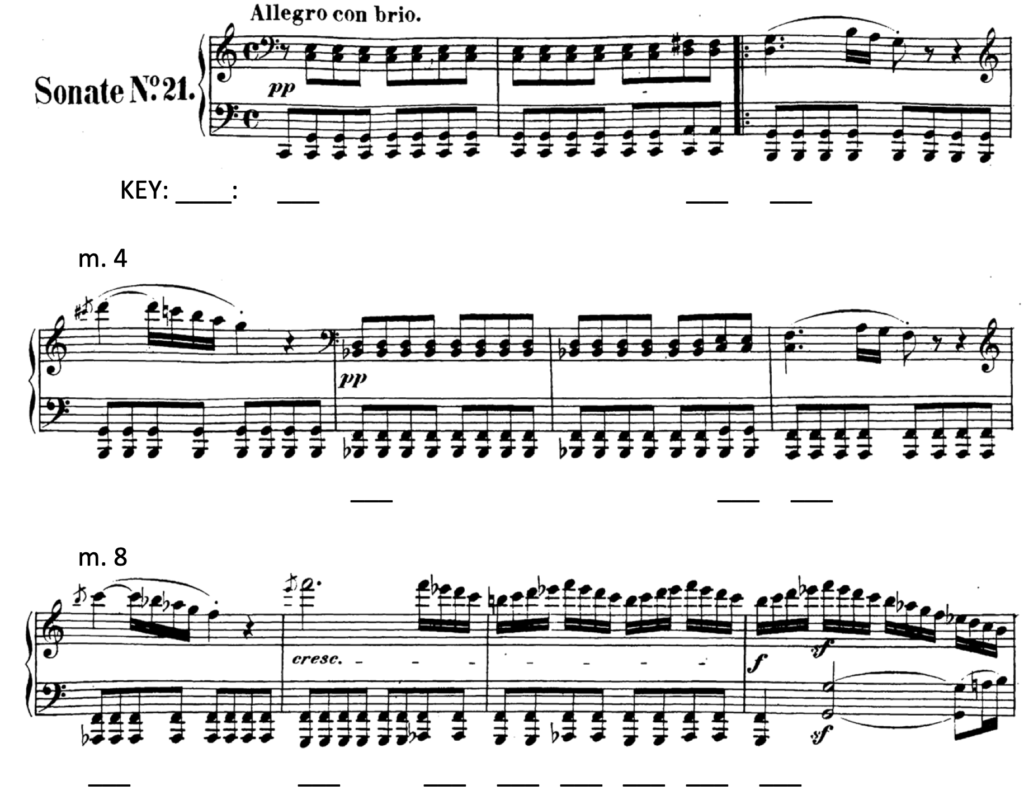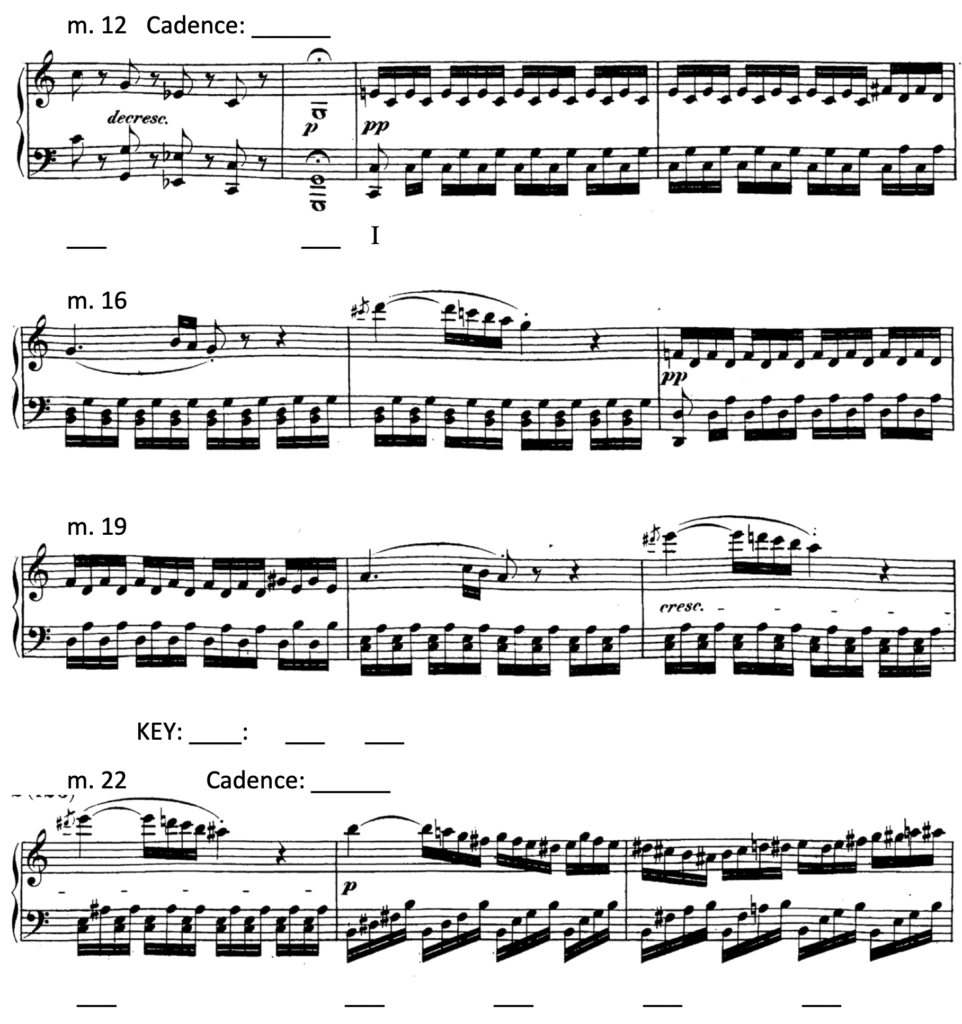Main Body
43 Descending tetrachord bass line
Learning goals for Chapter 43
In this chapter, we will learn:
- is another word that means the interval of a fourth
- How bass lines that descend by step from scale degree
 to
to  may be harmonized
may be harmonized - How bass lines that descend by step from scale degree
 to
to  function in musical contexts
function in musical contexts
The descending tetrachord
The term refers to a perfect fourth. When we speak of the descending tetrachord, we usually mean a line that moves down by step from scale degree ![]() to
to ![]() , spanning a perfect fourth. When this line is in the lowest voice, we refer to it as the . Its most simple manifestation descends by step diatonically using the natural minor scale (do – te – le – sol). Its most complex manifestation descends chromatically (do – ti – te – la – le – sol). Any variation on these is possible.
, spanning a perfect fourth. When this line is in the lowest voice, we refer to it as the . Its most simple manifestation descends by step diatonically using the natural minor scale (do – te – le – sol). Its most complex manifestation descends chromatically (do – ti – te – la – le – sol). Any variation on these is possible.
Watch video T81 to hear how the descending tetrachord may manifest in contrasting musical styles.
Video: T81 Descending tetrachord video 1: intro (6:31)
This video presents nine examples of the descending in a variety of tonal music contexts, ranging from Purcell and Monteverdi to Destiny’s Child and Lenny Kravitz.
Harmonizing the descending tetrachord bass line
There are many ways in which the descending tetrachord bass line may be harmonized. Figure 43-1 lists the most common possibilities for each scale degree (shown with solfege syllables), which you can use to construct a unique harmonization. For help understanding how to use this chart, watch video T82.
Figure 43‑1. Summary of different possible harmonizations of the descending tetrachord bass line
Video: T82 Descending tetrachord video 2: harmonization (2:36)
This short video examines different ways you can harmonize a .
Analysis with the descending tetrachord bass line
EXERCISE 43-1 Analysis with descending tetrachord bass line
Study and listen to the excerpt below. Identify the keys and provide Roman numerals and cadence labels on the appropriate blanks for mm. 1–13 and 19–24. Take care with the clefs; the right-hand part switches from bass to treble clef frequently. Then answer the questions below.
- What kind of is used in m. 23?
- What is the relationship between the two key areas in this excerpt?
- Identify all uses of in this excerpt.
- Identify all uses of in this excerpt.
Worksheet example 43‑1. Ludwig van Beethoven, Piano Sonata no. 21 in C major, op. 53, mvt. 1, mm. 1–24


Listen to the full track, performed by Richard Goode, on Spotify.
Learn about German composer Ludwig van Beethoven (1770–1827) by reading this Oxford Music Online article, written by Joseph Kerman and others.
Ear training with the descending tetrachord bass line
EXERCISE 43-2 Harmonic dictation with descending tetrachord bass line
For this exercise, play the recording of each dictation up to four times. Your tasks are to notate the bass and soprano voices on staff paper, provide Roman numeral labels beneath the staff, and identify the cadence type at the end of the progression. You may find it helpful to consult Figure 43-1 to remember the possible harmonizations of the descending tetrachord bass line.
These progressions appear in Appendix E as nos. 29–32.
Progression 1
Progression 2
Progression 3
Progression 4
synonym for the interval of a fourth
bass line that descends from the tonic to dominant scale degree; may be diatonic (do te le sol), chromatic (do ti te la le sol), or any variation on these models
triad in second inversion, meaning the fifth of the chord is the lowest sounding note
use of chromatic chords that exist diatonically in the parallel major or minor mode
a common compositional process that uses a series of successively occurring rhythmic, melodic, and/or harmonic patterns

